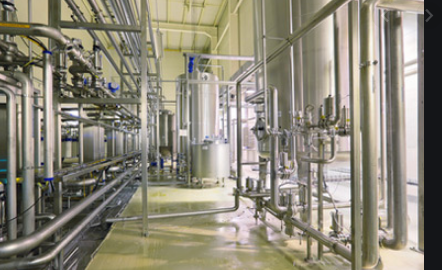Have you often thought about making changes to your business to keep up with market change? Are you hesitant in adaptation to change? Where does adaptation to change fall on your list of needed action? Probably pretty low is our guess. That is the surprising response we get from many of our clients.

Great businesses are never built through excessive reverence of a storied past. In an age of disruption, the only viable strategy is to adapt.
Can you change? Of course, you can. Everybody changes every day. But how versatile, agile, and quickly can you adapt yourself and your organization to stay relevant in today’s society?
Organizations are always evolving. What’s different now, is that we set new speed records of change on a daily basis. Technology gives us unprecedented possibilities. And this sea of opportunities is pushing the traditional bureaucratic, controlled and hierarchical organization into an identity crisis.
Here is an example of businesses that perfected the concept of change. You may be shocked at the amount of change and the industry involved.
We are always on the lookout for good examples of adaptation to change for successful business competitiveness. Here is an awesome example found in our local region of the Finger Lakes. One that will probably surprise you, as it involves some dairy farmers in Cayuga County. Let’s start the discussion with a little background.
Background
In 1986, dairy farmers in the Finger Lakes region (and as well across the nation) were struggling to keep their dairy farms competitive. Eight of them in Cayuga County started meeting to discuss the current milk market and what they could do to be more competitive.
They eventually joined together to form Cayuga Marketing, LLC, to collectively bargain for higher milk prices while making it their mission to offer the best milk products possible. With their success, they grew to include 29 member farms, all located in the Finger Lakes region.
Cayuga Marketing continued to explore ways to increase their responsibility and traceability throughout the milk market.
Here are a few facts about the Dairy Industry in Cayuga County:
The average size of farms: 270 acres

Average total farm production expenses per farm: $125,325
The percentage of farms operated by a family or individual: 88.65%
The average age of principal farm operators: 54 years
The average number of cattle and calves per 100 acres of all land in farms: 24.68
Milk cows as a percentage of all cattle and calves: 49.25%
Early collaboration
From its humble collaborative beginnings, Cayuga Marketing has grown to 26 members with over 32,000 cows who produce 830+ million pounds of milk annually. The members are the stewards of over 50,000 acres of fertile farmland and employ approximately 600 people. Not small farms or businesses are they?
Looking for ways to reduce nutrient losses, odors, and other negative effects the dairy industry has on communities and the environment, Cayuga Marketing hired a national organic residual management company in 2002. They derived a system to deal with cow manure in a less obtrusive way, and where they could add revenue. They began implementing proposed plans a year later. Several member farms still utilize this system.
The genesis of a milk processing plant
In 2008, member farmers began exploring ways to reduce milk-hauling costs. Over the previous decade, many regional milk processing plants had closed due to a low economy of scale. The larger processing plants being built were further from these farms, and with the rising price of fuel, driving up their hauling costs.
For the next few years, they researched the most effective ways to accomplish their goals of lowering hauling costs. It was determined that it would be in their best interests to construct a local processing plant.

On April 24, 2012, Cayuga Milk Ingredients (CMI) was created by 21 of the Cayuga Marketing member farmers who were passionate about continuing to increase traceability and adding family-owned farm value to every product. The board decision to begin construction was approved on October 10, 2012, and a ceremonial groundbreaking occurred soon thereafter.
The plant
Like most dairy companies, CMI’s proximity to the milk supply reduces the economic and environmental costs associated with hauling. All of the farmer-owners are within 40 miles of the plant, and 70% are within 12 miles. This allows fast processing to ensure the freshest ingredients possible.
These 26 farms ship about 36 trailer loads of milk per day. The plant will take 26 of them under this phase of operation and is being built with expansion in mind. As the export market continues to grow, the need for products from this plant will grow also.
The decision to partner for a milk processing plant was not hard. It helped reduce transport costs and provide more control over milk pricing and their product base through vertical integration. So making the investment to have some control–or at least some return to the farm–as an owner of the plant was a key factor in this increased scale of collaboration.
The location of the plant is ideal as it is only 12 miles from 70 % of most of the 26 farms. The closest plant that farms ship to now is over 100 miles, so the new plant will have a great impact on reducing hauling costs.
International partnership
What started out as an idea to save transportation costs turned out to be something much larger and much more strategic. In this case, it was the means to address a much larger market with a wider variety of milk products.
First, though, they needed a partner or two to add technology, expertise, and ability to market to the international market. They found all in Ingredia, a demonstrated industry leader with a proven record of successful innovation and customer experience. They are a dairy company that develops and produces milk powders, milk proteins, functional systems, and innovative bioactive for the food and nutrition & health industries throughout the world.
Ingredia is part of the cooperative group La Prospérité Fermière which collects milk from 1200 members based throughout the Nord/ Pas-de Calais region in France. Ingredia’s principal mission is to effectively promote the entire milk production from its members, essentially through its fractionation process and technology.
They are thus a major player in the global industry of dairy ingredients by developing and producing products emanating from milk cracking. Thanks to soft and non-denaturing technologies (chemicals not used), Ingredia offers its clients native and non-denaturing ingredients, presenting a structure close to that naturally present in milk.
Ingredia was a perfect choice of partner, not only for the expertise in the technology and product line but also for their ability to act as a marketing agent for their products worldwide.
The bottom line
Quite an example of adaptation to change for 26 farmers in upstate New York isn’t it? None of the growth and success would exist without it. And I’ll bet they are far from the end of their adaptation and change. We’ll have to check in on their progress in another year or two.
Now, what about you and your business? What are some of your ideas for adaptation to change for your business?
And what’s the conclusion? The conclusion is there is no conclusion. There is only the next step. And that next step is completely up to you.
It’s up to you to keep improving the growth hacking of your business. Lessons are all around you. In many situations, your competitor may be providing ideas and or inspiration. Or maybe offering to collaborate. But the key is in knowing that it is within you already.
All you get is what you bring to the fight. And that fight gets better every day you learn and apply new lessons.
When things go wrong, what’s most important is your next step.
Test. Learn. Improve. Repeat.
Are you devoting enough energy to improving your growth hacking for your team?
Do you have a lesson about making your growth hacking better you can share with this community? Have any questions or comments to add in the section below?
Mike Schoultz is the founder of Digital Spark Marketing, a digital marketing and customer service agency. With 40 years of business experience, he blogs on topics that relate to improving the performance of your business. Find them on Twitter, and LinkedIn.
More reading on continuous learning from Digital Spark Marketing’s Library:
Get Rid of Mistakes in Marketing Messages to Improve Competitiveness
The Secrets to Becoming a New Market Leader
Do You Know the 9 Keys to Create Effective Advertisements?
Adaptation to Change Is Essential for Any Competitive Business

